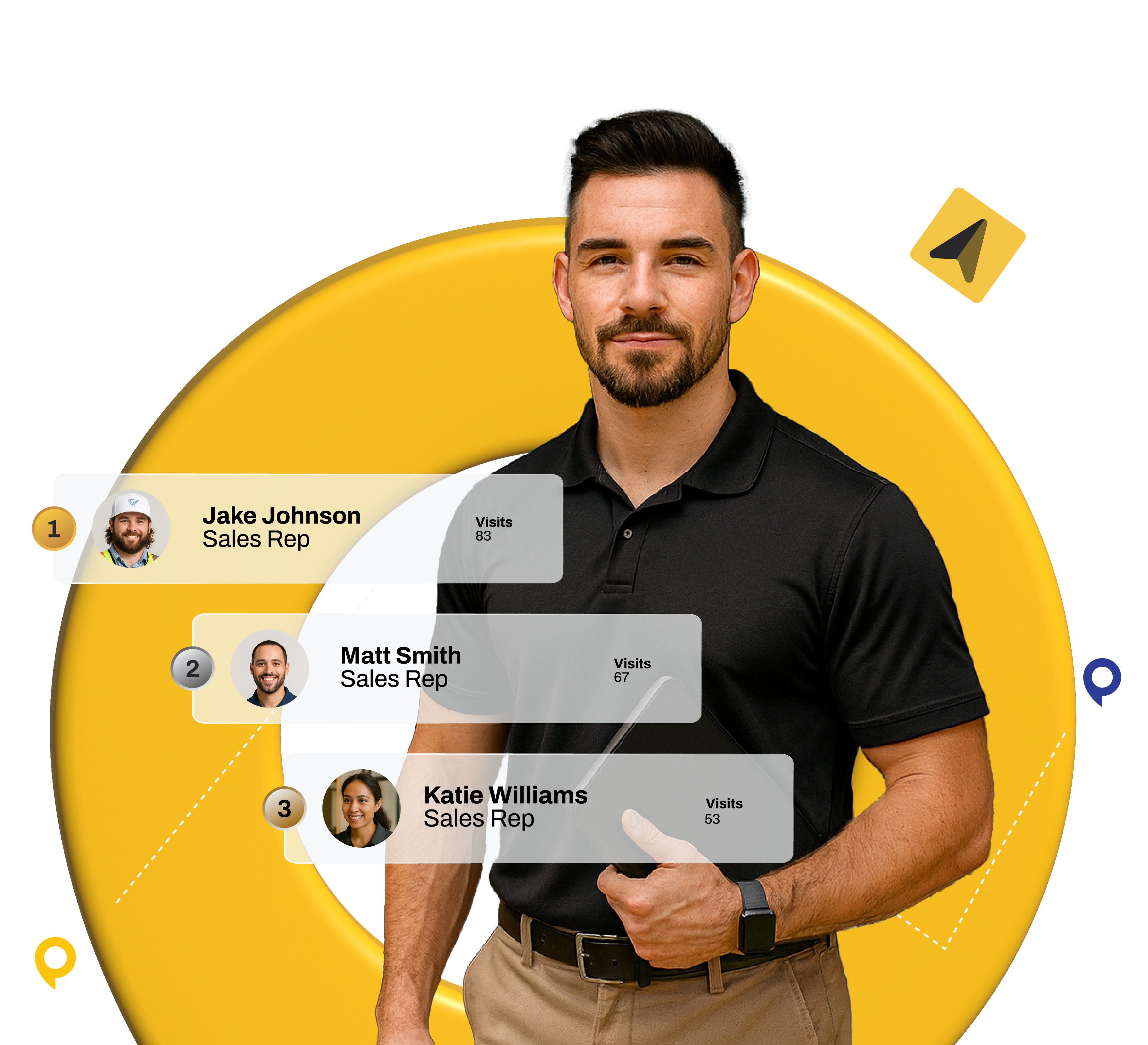Thinking of building your own business software? You’re not alone. With AI and low-code platforms promising to make development easier, leaders across industries are tempted to tackle new solutions in-house. The barriers to entry feel lower than ever: rapid prototyping, automation, and custom integrations seem just a sprint away. But while the allure of building is growing, the real-world risks and costs have evolved too—making the build-vs-buy decision more critical (and complex) than ever before.
This article breaks down the tradeoffs, drawing on hard-won lessons from SPOTIO’s own journey, the reality of AI-enabled software development in 2026, and tactical advice for teams who want an actual edge—not another IT project.
Why Field Sales Teams Might Want to Build
There’s a reason leaders keep saying, “Let’s just build our own.” You want control. You want a tool tailored to your reps, your territories, your data. In an era when AI and low-code platforms make software look plug-and-play, the lure is strong—especially if you think you’ll save cash.
It sounds perfect: control your roadmap, build only what your team needs. But “custom” almost always grows into “complex.” Needs change. Regulations tighten. Training and support become endless chores. That “simple tool” ends up needing feature parity with leading SaaS platforms just to keep your team moving.
SPOTIO’s founder, Trey Gibson, started as a DIY guy. Frustrated by the options available, he set out to build his own field sales app. The first version? Resource-draining, slower than promised, and miles from user-friendly. Years of development, a dedicated technical team, and serious cash later, SPOTIO delivered what reps actually wanted. That pain paved the way for a market-leading platform—but it was a road littered with surprises.
The True Costs of Building
It’s tempting to focus on developer salaries and think that’s the price of building your own field sales software. In reality, the costs run much deeper and strike at the heart of your team’s productivity, momentum, and competitive edge. Every DIY project pulls resources from revenue-generating work, stretches timelines, and creates new headaches that go far beyond the initial scope. Unexpected demands for talent, ongoing support, and compliance can drain budgets and slow growth. When leaders look back, the real question isn’t “did we save money”—it’s “how much did we lose while building?”
It’s never “just the cost of a developer.” In-house builds drain much more than dollars.
Time, Talent, and Opportunity Cost
- Delayed Results: Every quarter spent building is a quarter your competition is closing deals using proven tech.
- Lost Talent: Developers on side projects leave; institutional knowledge vanishes.
- Focus Drain: Internal teams get pulled from revenue-driving tasks into endless QA, bug fixes, and wish-lists.
Technical Debt and Maintenance
- Endless Support Loops: You’re now the product manager, support desk, and training lead.
- Unseen Upkeep: Security patches, compliance fixes, feature creep—costs add up.
- Integration Headaches: Want that shiny new CRM integration? It’s now your job to plan and build (then support it forever).
The Hidden Cost of Compliance
Meeting evolving data privacy, security, and audit standards is no small task. Even small oversights can mean expensive mistakes. (For a deeper look at legal and regulatory risks, see “The Risks of AI and Compliance” below.)
The Risks of AI and Compliance
Building your own solution in today’s AI-driven, highly regulated business environment introduces a new level of risk—legal, operational, and reputational. A good idea can quickly become a liability the moment you handle customer data, automate core business processes, or try to scale for enterprise use. The regulatory bar is rising fast: post-2024, data privacy laws (GDPR, CCPA), security frameworks (SOC 2), and stricter global standards demand relentless attention to compliance and documentation.
For leaders in any industry—not just field sales—this means that a “simple solution” often needs as much governance and security oversight as a commercial platform. The temptation to build fast with AI can lead teams to overlook these checkpoints, but the reality is clear: compliance and security can’t wait until after launch.
Here are the most urgent risks today’s teams face:
GDPR, SOC 2, and Security Minefields
- Strict Compliance: In 2025, major companies including TikTok, Google, and Amazon faced millions of dollars in fines for GDPR violations. At the same time, AI-driven fraud is accelerating.
- Audit-Ready Is Non-Negotiable: Without certified practices, you risk both lawsuits and lost enterprise deals.
- SOC 2 Is Not a Logo: It’s months of work, regular audits, and ongoing controls. AI adds a new level of complexity.
Data Integrity and Model Risk
- Garbage In, Lawsuit Out: When models drift or bias creeps in, you need protocols to catch errors—before they reach customers.
- Audit Trails: Vendors track every update, answer, and change. Homegrown? You’re often flying blind.
The Reality of AI Project Failures
- 95% of enterprise AI pilots miss their goals, according to a 2025 research report from MIT. Many never graduate from side project to field-ready tool.
- Overlooked Infrastructure: AI at scale needs real data ops: versioning, rollback, compliance—with critical customer data, one slip can be costly.
The Value of Buying SaaS
When you choose a modern SaaS platform, you’re not just getting an app—you’re inheriting the expertise, best practices, and road-tested solutions that come from supporting hundreds (or thousands) of field sales teams. These platforms are built on years of feedback, lessons learned, and real-world adaptation, meaning you start ahead of the curve instead of reinventing it. Vendors invest in compliance, constant upgrades, and expert support so your team can stay productive and competitive without technical distractions. The right SaaS partner brings proven reliability, rapid implementation, and ongoing innovation—and lets your leaders focus on sales results, not software headaches.
Modern SaaS platforms deliver more than just “software.” They bake in years of edge-case learning, compliance, and continuous evolution.
Faster Implementation, Upgrades, and Support
- Faster Wins: Field teams can launch in weeks, not years.
- Always Up-to-Date: Upgrades, security patches, and new features are managed by the vendor, so your team spends less time on maintenance and more time selling.
- Expert Support: Dedicated specialists help your team solve challenges fast—so reps aren’t left waiting for answers or stuck troubleshooting in the field.
Benefit from Vendor Knowledge & AI Experience
- Cross-Industry Insights: Vendors build by listening to hundreds of teams—solving problems before you ever see them.
- Built-In AI Knowledge Assistant: SPOTIO delivers instant access to sales content, platform guidance, and onboarding help—field-tested, not experimental.
- Referenceable Results: Real-world ROI benchmarks, case studies, integrations that deliver on promised outcomes.
Staying Ahead of Competitors
In today’s field sales landscape, speed and adaptability aren’t just advantages—they determine who wins. While your team debates and builds, competitors are launching, training, and closing deals faster with proven platforms. Every month you delay is lost revenue, missed opportunities, and eroded customer trust. When the right tools get into your team’s hands quickly, you see better results—sooner.
Here’s how each approach stacks up:
Build In-House:
- 12-24 months to launch first version
- Requires full-time developer & PM
- Missed deals during build phase
- 100% support and update burden
- Limited outside perspective or peer benchmarks
Buy SPOTIO/SaaS:
- Launch in <30 days
- Expert-led onboarding included
- Start closing deals immediately
- Upgrades and field support included
- G2 Rating Benchmark: 4.5/5 (Nov 2025)
Vendor Know-How Delivers Real Innovation
Solution Gaps: Teams building in-house often lag behind in adopting the latest integrations, best-in-class mobile experiences, and compliance standards—because they lack the benefit of industry-wide learning.
Falling Behind: Field sales technology keeps evolving—from prospect discovery via Google Places for B2B and Lead Machine for B2C, to one-tap activity logging and location-verified visits. If you’re not moving forward, you’re falling behind.
When Building Makes Sense
While buying will be the best move for nearly all field sales teams, a homegrown build isn’t always a mistake. If your business has hyper-unique processes, edge-case compliance, or integration needs no off-the-shelf software can meet—and you’re prepared to dedicate a real product team for the long haul, building can offer an advantage.
But for most, these scenarios are the exception, not the rule. If your main needs are territory management, rep accountability, prospect tracking, compliance, and ease of use, buying means you avoid years of trial and error. Most “unusual” workflows can actually be solved with configurable field sales platforms like SPOTIO (and a good implementation partner)—no custom build required.
FAQ: Build vs Buy for Field Sales
What’s the ROI on specialized field sales software?
Most teams see measurable productivity gains—faster lead follow-up, less windshield time, more deals closed within the first 90 days. Case studies range from 10-46% above manual or legacy tools, depending on market and adoption levels.
How do I evaluate “build vs buy” for my field team?
Map field workflows and compliance needs. Estimate years (not months) for delivery. Factor real costs (staff, maintenance, certifications). Compare with platform demos—ask for field-specific features and references.
Is AI a shortcut to building my own stack?
AI can speed up prototyping, but for regulated, enterprise-grade solutions? Not even close. While AI capabilities continue to advance, using AI for development in 2026 adds complexity, expands risk and compliance needs, and requires constant oversight.
What compliance issues matter for field sales platforms?
GDPR, SOC 2, and state privacy laws require secure storage, clear audit trails, and privacy by design. Many deals now hinge on documented compliance—vendor platforms deliver.
What’s the failure rate for homegrown AI projects?
Over 90% of enterprise AI pilots stall at proof-of-concept or fail compliance checks. Even successful builds require ongoing retraining, support, and documentation.
How do integrations work with SPOTIO?
SPOTIO syncs seamlessly with leading CRMs through real-time, bi-directional integration along with many other field sales tools. For additional apps, connect over 6,000 tools via Zapier.
What should I ask before building?
- How soon do we need results?
- Who will maintain compliance/security after launch?
- Can we support, train, and update reps nonstop?
- What’s the risk/impact if a field sales tool goes down for a day?
Key Takeaways and Next Steps
Bottom line: Building field sales software (especially with AI) is a high-stakes bet that rarely pays off for teams needing fast, secure results. SaaS platforms like SPOTIO have invested years in solving field-tested headaches, delivering tools that help reps close more business right now.
Still on the fence?
List your must-haves, run the numbers, demand real-world references—and stay focused on what helps your reps win in the field, not just what seems “custom” in a planning meeting.
Checklist: Build vs Buy Evaluation
- Do we have full-time technical staff for long-term support and compliance?
- Can we afford long delays before seeing results?
- Are we prepared to pass audits and maintain security standards?
- Are our needs so unique that no vendor platform could match them?
- Have we calculated the cost of missed deals during development?
- How will we keep pace as AI, compliance, and field sales best practices keep evolving?
SPOTIO supports field teams with proven, compliant, and ever-evolving sales solutions—letting you focus on sales, not software headaches.




